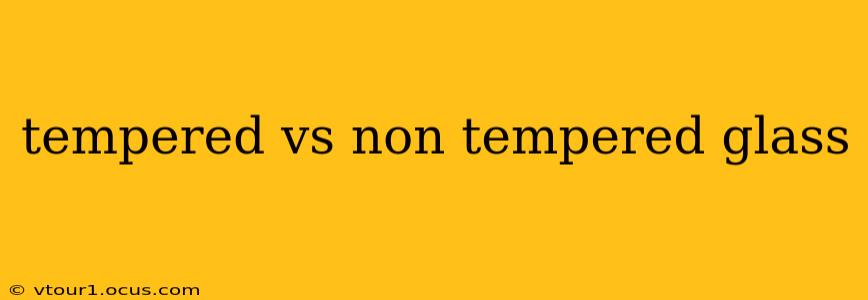Choosing the right type of glass is crucial for various applications, from windows and shower doors to smartphone screens and ovenware. Understanding the differences between tempered and non-tempered glass is essential for making informed decisions based on safety, durability, and specific needs. This comprehensive guide delves into the key distinctions, helping you determine which type best suits your project.
What is Tempered Glass?
Tempered glass, also known as toughened glass or safety glass, undergoes a special heat treatment process. This involves heating the glass to a high temperature (around 1300°F or 704°C) and then rapidly cooling it. This rapid cooling process creates compressive stresses on the surface of the glass and tensile stresses within the interior. This unique stress configuration makes tempered glass significantly stronger than annealed (non-tempered) glass.
Key characteristics of tempered glass:
- Increased Strength: Approximately four to five times stronger than annealed glass.
- Improved Impact Resistance: Resists shattering upon impact, though it will eventually break under sufficient force.
- Safety Feature: When tempered glass breaks, it shatters into small, relatively harmless, granular pieces, minimizing the risk of injury compared to the sharp shards produced by annealed glass.
- Thermal Shock Resistance: Can withstand greater temperature fluctuations than annealed glass.
What is Non-Tempered Glass (Annealed Glass)?
Non-tempered glass, also called annealed glass, is the standard type of glass produced through a simple cooling process. It lacks the heat treatment of tempered glass, resulting in a less durable and less safe material.
Key characteristics of non-tempered glass:
- Lower Strength: Susceptible to breakage under relatively low impact.
- Sharper Breakage: Shatters into large, sharp shards upon impact, posing a significant safety risk.
- Lower Thermal Shock Resistance: Prone to cracking or shattering due to rapid temperature changes.
- Lower Cost: Generally less expensive than tempered glass.
Tempered vs. Non-Tempered Glass: A Detailed Comparison Table
| Feature | Tempered Glass | Non-Tempered Glass (Annealed Glass) |
|---|---|---|
| Strength | 4-5 times stronger | Significantly weaker |
| Impact Resistance | High | Low |
| Breakage Pattern | Small, granular pieces | Large, sharp shards |
| Safety | Safer | Less safe |
| Thermal Shock Resistance | High | Low |
| Cost | Higher | Lower |
| Applications | Automotive glass, shower doors, ovenware, smartphones | Windows (some applications), picture frames, mirrors |
What are the common uses of tempered and non-tempered glass?
Common Uses of Tempered Glass:
- Automotive Glass: Windshields, side windows, and rear windows in vehicles.
- Shower Doors and Enclosures: Enhanced safety and durability in wet environments.
- Tabletops: Offers impact resistance and safety.
- Stovetops and Ovenware: Designed to withstand high temperatures.
- Smartphone Screens: Provides increased scratch and impact resistance.
- Balconies and Railings: For safety and strength in exterior applications.
Common Uses of Non-Tempered Glass:
- Interior Windows: Generally used where safety is less critical, such as interior room dividers or picture frames.
- Mirrors: Commonly used in mirrors due to its affordability and ease of cutting.
- Artwork Protection: Can be used to protect artwork in frames or displays where impact is less of a concern.
Can you cut tempered glass?
No, tempered glass cannot be cut or drilled after it has been tempered. The process of tempering permanently alters the glass's molecular structure. Any attempt to cut or modify it will cause it to shatter. If modifications are needed, the cutting must be done before the tempering process.
Is tempered glass more expensive than non-tempered glass?
Yes, tempered glass is generally more expensive than non-tempered glass because of the specialized heat treatment process involved in its manufacturing. The added safety and durability justify the increased cost for many applications.
What type of glass is best for windows?
The best type of glass for windows depends on the specific application and location. For exterior windows, tempered glass is often preferred for safety and impact resistance. However, for interior windows where safety is less critical, non-tempered glass may be sufficient and more economical.
This comprehensive comparison should equip you with the knowledge to choose the right type of glass for your next project, ensuring both functionality and safety. Remember to always prioritize safety and select the appropriate glass type based on the specific application and its potential risks.
